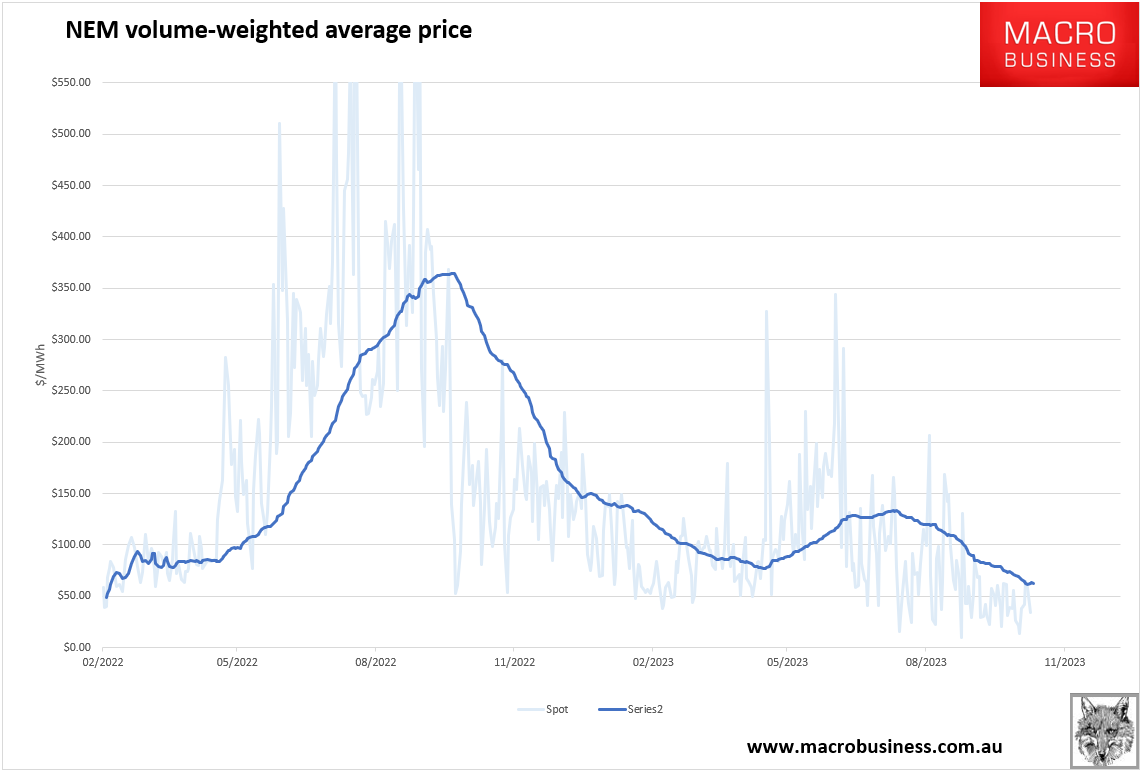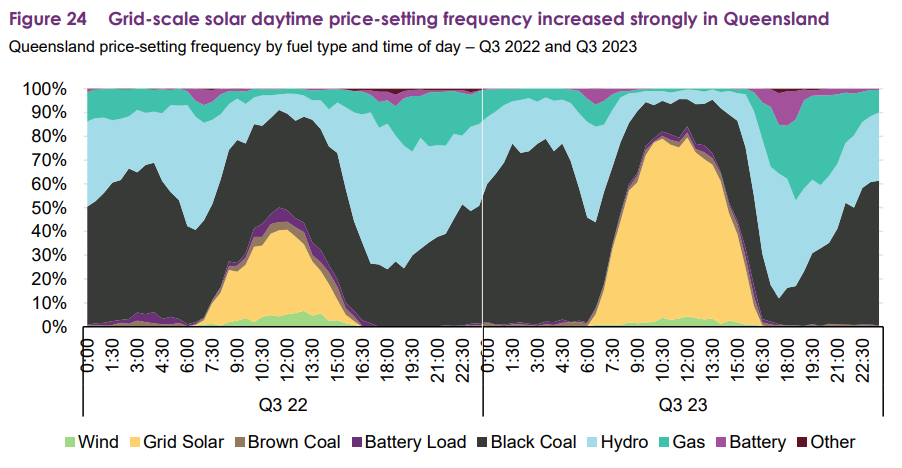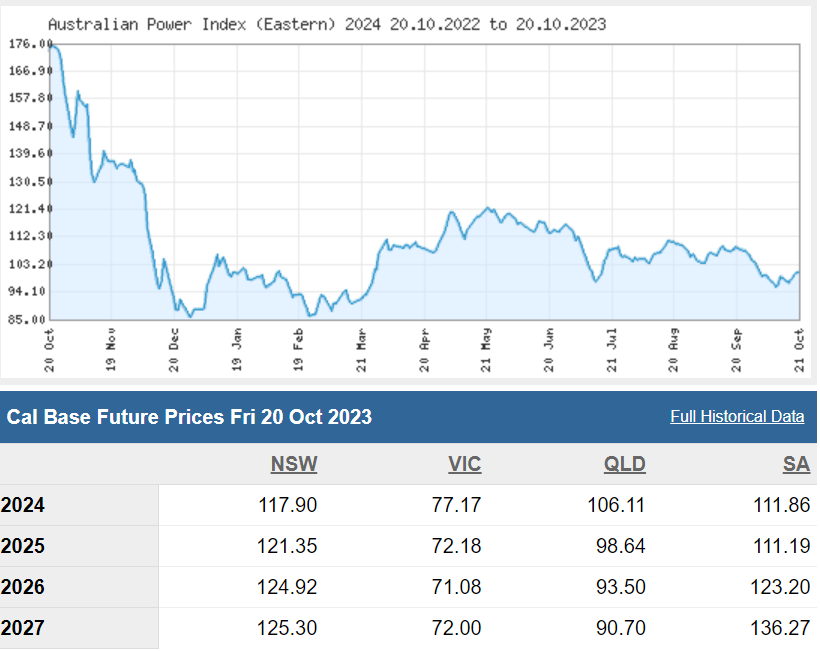The latest gas spot price is up and away, tracking much higher export prices:

However, so far (which is not very long) electricity prices have not followed:

They will before long, but there is some good news. The rise of renewables, good weather and solar is squashing gas usage. AEMO today.
Warmer weather and increased distributed photovoltaic output reduced operational demand
• Above average temperatures across Australia decreased underlying demand in most National Electricity Market (NEM) regions in Q3 2023. Distributed photovoltaic (PV) output grew to average 2,287 megawatts (MW), up 31% on Q3 2022 and a new high for any Q3. Both factors drove average NEM operational demand to a new Q3 low of 21,270 MW.
• Numerous minimum demand records were set this quarter. The NEM as a whole reached an all-timeminimum demand of 11,393 MW on Sunday 17 September, 499 MW below the previous record in Q4 2022. New South Wales, Victoria and South Australia all saw record minimum operational demands this quarter, and Queensland recorded its lowest operational demand since 2002. South Australia’s minimum operational demand was 21 MW in the half-hour ending 1330 hrs on 16 September, when distributed PV output represented 98.5% of underlying demand.

Reduced wholesale prices despite reduction in black coal-fired capacity
Wholesale spot electricity prices across the NEM averaged $63 per megawatt-hour (MWh) in Q3 2023, a 71% decline from the same time last year, and a 41% drop from Q2 2023. Average quarterly spot prices ranged from $29/MWh in Tasmania to $92/MWh in South Australia.
Despite the retirement of the remaining Liddell units in April 2023, there were significant increases in the volume offered by black coal generators in lower price bands compared to Q3 2022.
Higher output from variable renewable energy (VRE) generators and lower operational demand, particularly in the middle of day, increased the occurrence of negative prices in the NEM to its highest ever level, 19% of all dispatch intervals. All regions in the NEM saw an increase in negative price occurrences. Queensland had a notable increase in daytime negative prices, with grid-scale solar generators setting the price more often than all other forms of generation in peak daytime hours.
Gas and black coal-fired output declined, increases in grid-scale solar and distributed PV
Black coal-fired generation output fell to its lowest Q3 average since NEM start at 9,718 MW, a 10% decline from the same quarter last year. Several black coal-fired generators saw markedly lower utilisation rates as they reduced daytime output and ramped up for evening peaks.
Gas-fired generation recorded its lowest Q3 output since 2004, down 34% on Q3 2022 (which saw high gas generation with elevated electricity and gas spot prices and extended coal-fired unit outages).
Grid-scale solar output increased this quarter by 412 MW from Q3 2022, driven predominantly by new and recently commissioned units in Queensland and New South Wales.

That is the first genuinely good news for Australian household and business utility bills in years.
I expect NEM prices will rise again as we head into summer heat and higher gas prices. Futures are still high:

But, amusingly, the gas cartel is killing itself at a good clip as its sky-high prices act as a private carbon tax incentivising renewable investment.
It is a great shame the Australian Government is not taking the tax revenue instead of a foreign-owned cartel.
But, hey, enjoy the gas suicide!

